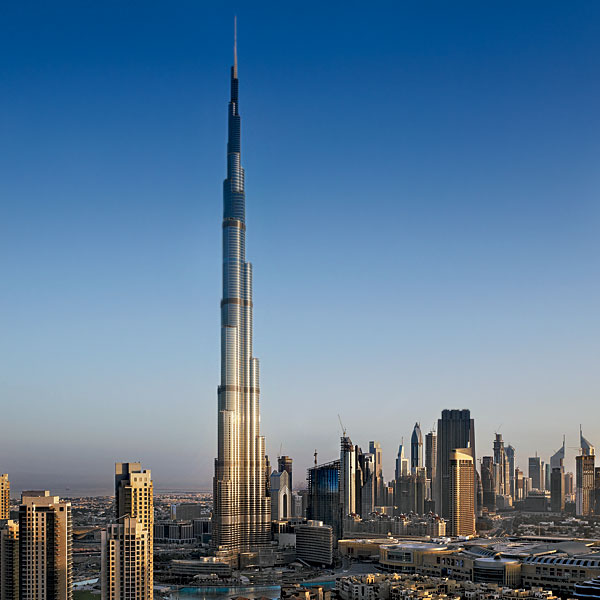
Halfway around the world, in Dubai, the Burj Khalifa, currently the world’s tallest building, soars 2,716 feet. Many people deserve credit for this record, but first among them is Bill Baker, a structural engineer who works out of Skidmore, Owings & Merrill’s office in the Santa Fe Building—a 17-story landmark that was considered pretty tall itself in its day.
Baker’s achievement is more than a triumph of the will. It required, he says, a paradigm shift in structural engineering. The buttressed-core structure solves the biggest problem of record-breaking tall buildings: “The feet are too big,” says Baker, who explains his highly technical domain in such clear terms that he could charm the most acrophobic investors. The problem is that very tall buildings need a broad base for stability—the higher the tower, the broader the base—but real-estate agents have trouble leasing space on lower floors the size of football fields. When Baker talks about the Burj Khalifa, he boasts that even though it’s almost twice as tall as the building formerly known as the Sears Tower, it has 25 percent less space inside.
In fact, the Burj, at 160 stories, is a sleek needle of a building. Designed with Adrian Smith, an architect then at SOM, the structure’s central concrete core is buttressed by three wings that extend out like the arms of a three-pointed star. The building remains rigid no matter which way the wind is blowing—wind being the main load that a tall structure must withstand. A series of setbacks give the Burj its handsome profile, but more important than looks, the tapered form was tested in wind tunnels and modified for optimum stability.
Baker says that Chicago’s preeminence in the field is not mysterious. The Illinois Institute of Technology’s School of Architecture has been experimenting with structural systems since the 1960s, when Mies van der Rohe protégé Myron Goldsmith was teaching there and working at SOM. Baker collaborated with the late Goldsmith, who was part of the team credited with the tubular construction of the John Hancock and other tall buildings of its vintage. Now Baker is not just continuing the tradition, he pretty much owns it, with more “supertall” (1,000-feet-plus) buildings—including the Trump Tower—under his belt than any other structural engineer in the world.
Photograph: Nick Merrick/SOM © Hedrich Blessing


